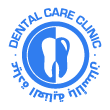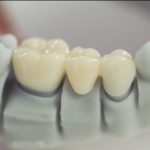The Relation Between Periodontal Disease and Vitamin D
Background: There is conflicting evidence regarding the association between vitamin D and periodontal disease. The purpose of this study was to explore that relation.
Methods: This cross-sectional study used data from the Canadian Health Measures Survey for respondents 13–79 years of age. Vitamin D status was determined by measuring plasma 25-hydroxyvitamin D (25(OH)D) concentrations. Periodontal disease was defined by gingival index (GI) and calculated loss of attachment (LOA). Statistical analyses included bivariate tests and multiple logistic regression.
Results: At the bivariate level, 25(OH)D concentrations below the cutoff levels of 50 nmol/L and 75 nmol/L were associated with GI. However, multiple regression analyses for GI revealed no association with mean 25(OH)D level or either concentration. Although no significant association between LOA and 25(OH)D status was identified at the bivariate level, a statistically significant association was observed between LOA and 25(OH)D levels < 75 nmol/L on multiple regression analysis. However, mean 25(OH)D concentrations and those < 50 nmol/L were not associated with LOA on multiple regression analysis.
Conclusion: Vitamin D status was inversely associated with GI at the bivariate level, but not at the multivariate level. Conversely, vitamin D status was not associated with LOA at the bivariate level, but it was inversely associated with LOA at the multivariate level. These results provide modest evidence supporting a relation between low plasma 25(OH)D concentrations and periodontal disease as measured by GI and LOA.
Chronic periodontitis is an inflammatory condition of the periodontium initiated by microbial biofilms that form on the teeth.1Bacterial products, as well as the host’s immune response to these products, result in destruction of the tissues that support the teeth, including alveolar bone. Because of this tissue destruction, chronic periodontitis is a major cause of tooth loss in adults.2,3 Prevention of this disease is important because tooth loss can affect one’s nutritional status4 and quality of life.5 Chronic periodontitis has also been associated with systemic conditions, such as cardiovascular disease6 and type II diabetes mellitus.7
Vitamin D is a fat-soluble vitamin obtained from exposure to sunlight, diet and nutritional supplements.8 Vitamin D is metabolized in the liver to 25-hydroxyvitamin D (25(OH)D) and then metabolized in the kidneys to its active form, 1,25-dihydroxyvitamin D (1,25-(OH)2D).8 As the major circulating metabolite in the blood, 25(OH)D is used to determine a patient’s vitamin D status.8 Although there is no consensus on optimal levels of 25(OH)D, most experts define < 50 nmol/L (20 ng/mL) as vitamin D insufficiency.8 Recent evidence suggests that 25(OH)D levels may need to be as high as 75 nmol/L (30 ng/mL) to achieve optimal vitamin D status.8
Vitamin D is involved in regulating calcium absorption from the intestines, maintaining plasma calcium concentration and bone mineralization.9 Studies have found significant positive associations between 25(OH)D levels and bone mineral density10 as well as between vitamin D supplementation and a lower risk of fractures.11
More recent evidence indicates that vitamin D also has a regulatory effect on the immune response, stimulating immune response at times, while inhibiting it at others. One study12 demonstrated that increased production of the antibacterial proteins cathelicidin and beta-defensins followed exposure to antigens. The authors concluded that the ability to produce active vitamin D improved bactericidal activity. There are many examples of vitamin D’s ability to inhibit the immune response. In vitro studies have shown that 1,25-(OH)2D inhibits the proliferation, maturation and differentiation of dendritic cells from monocytes.13 The active form of vitamin D also inhibits the production of inflammatory cytokines in monocytes.13 Some studies have also reported that 1,25-(OH)2D has the ability to suppress the proliferation and cytokine production of T-lymphocytes.13
Because chronic periodontitis is characterized by bone loss triggered by a host immune response reaction to bacterial plaque, vitamin D deficiency may have an effect on the development and progression of periodontal disease.14-19 Two large cross-sectional studies14,15,17 have found an association between low vitamin D levels and markers of periodontal disease. However, the largest prospective study to date,19 as well as the most recent cross-sectional study,20 found no relation between these two entities. It is clear that further research is needed to determine what impact vitamin D status has on the progression of periodontal disease. The aim of this study was to explore the relation between 25(OH)D concentration and periodontal disease measured by gingival index (GI) and loss of attachment (LOA) using data derived from the Canadian Health Measures Survey (CHMS).
source: www.dentalnews.com


